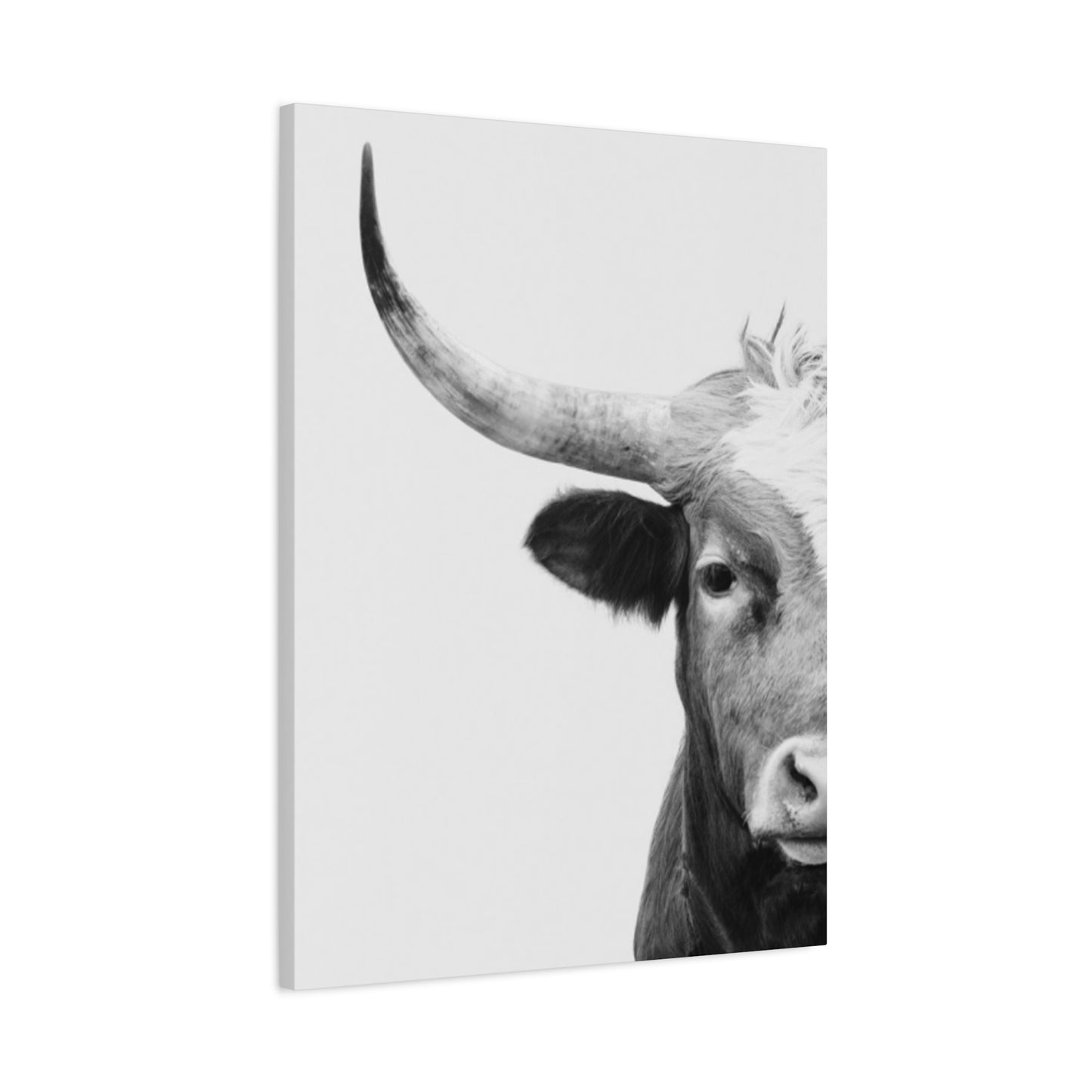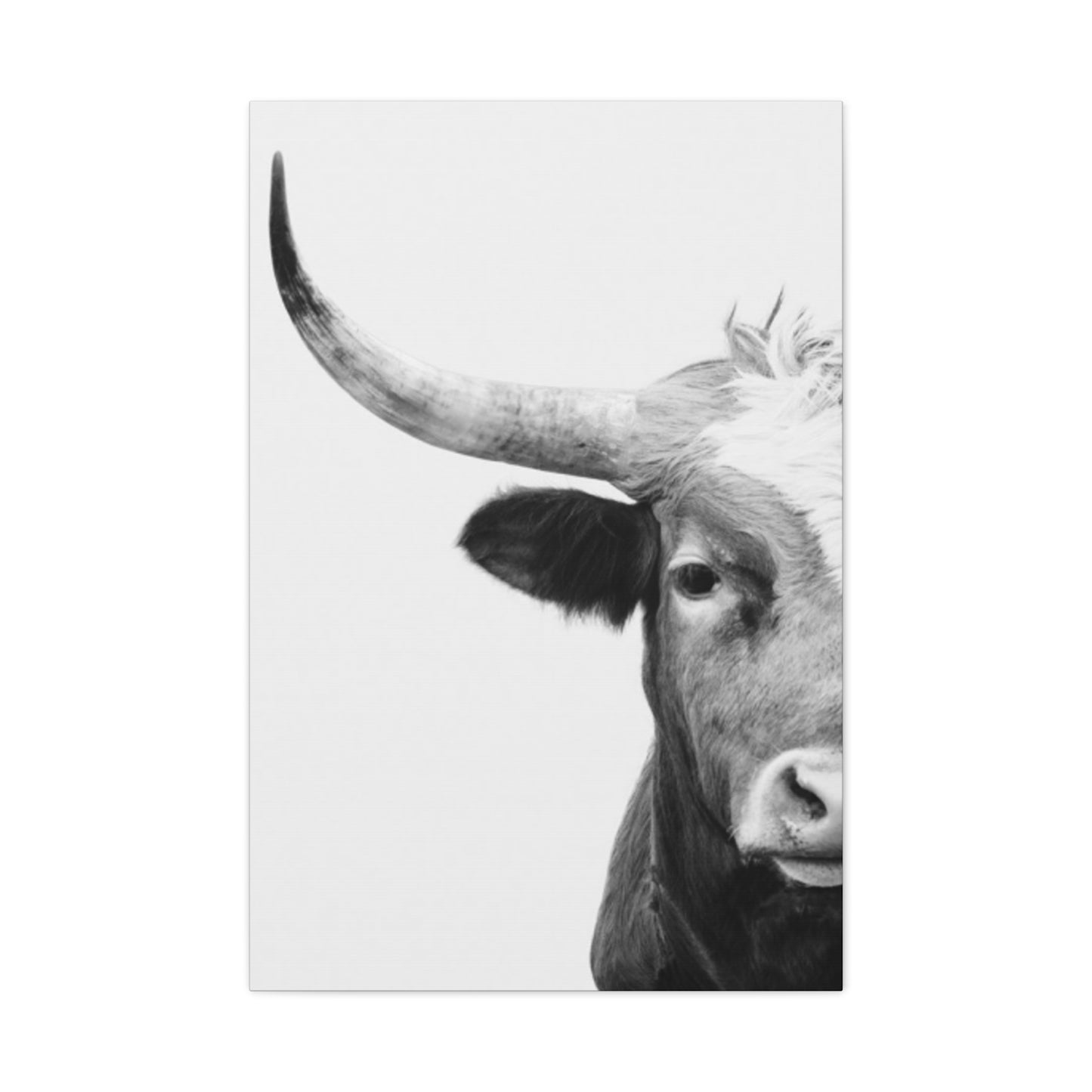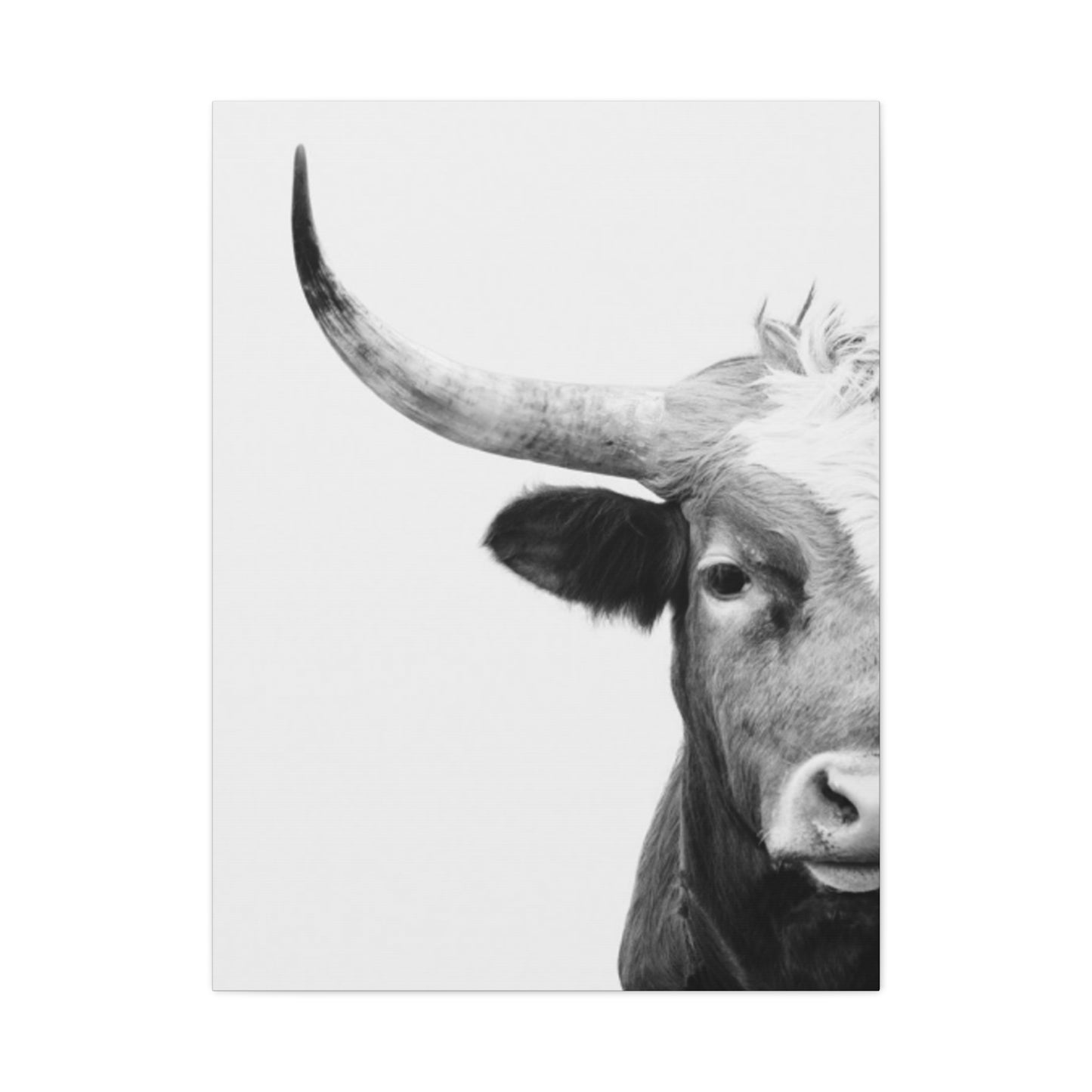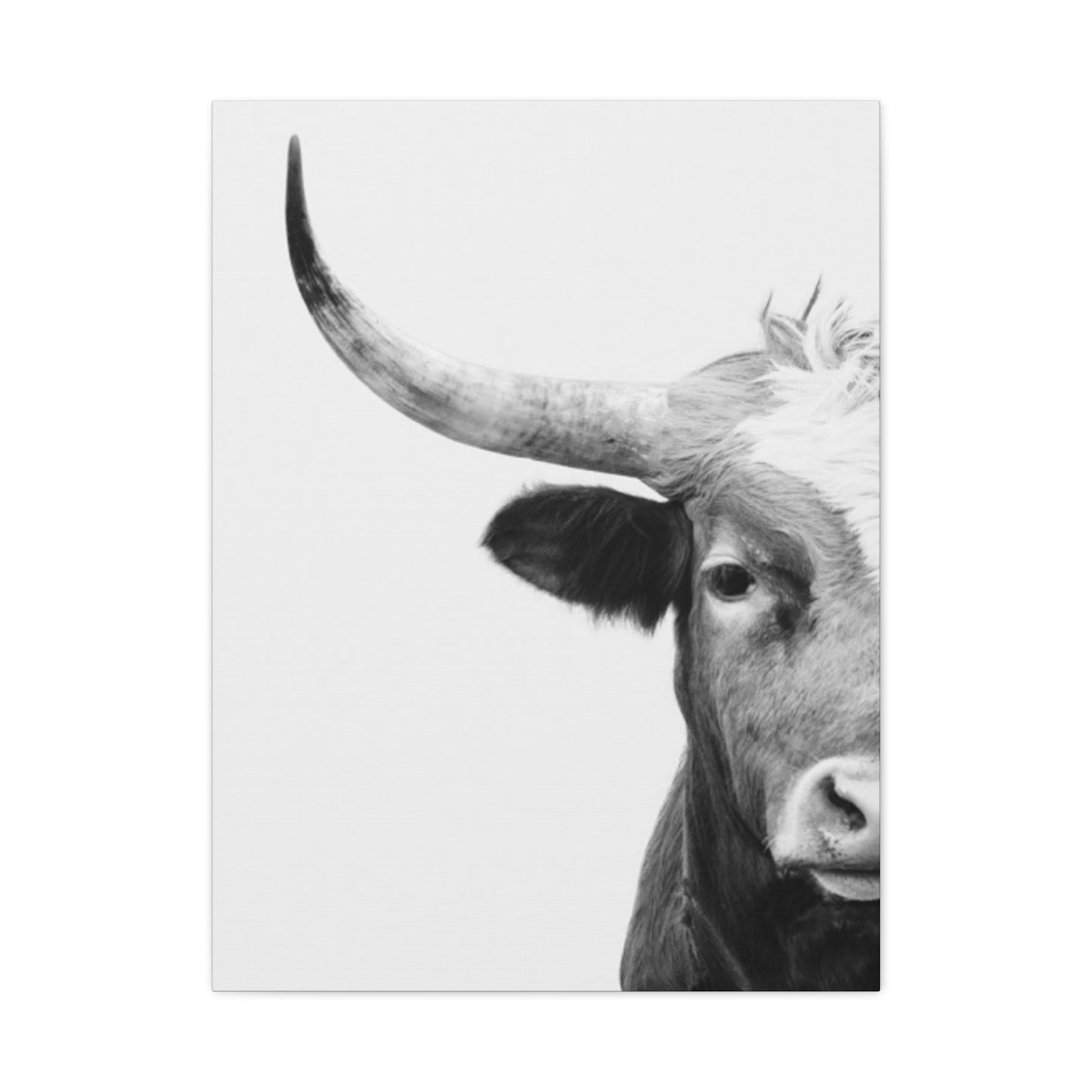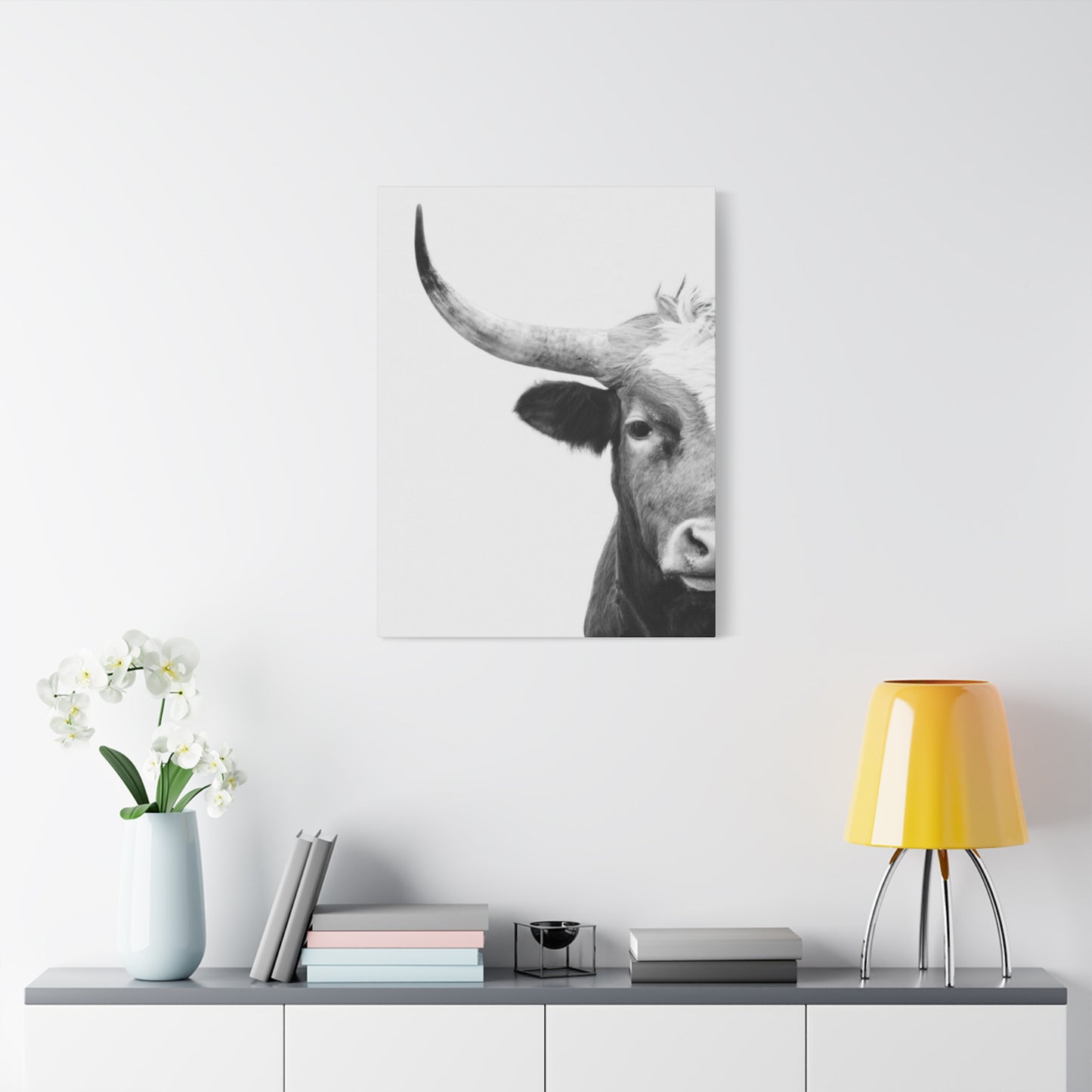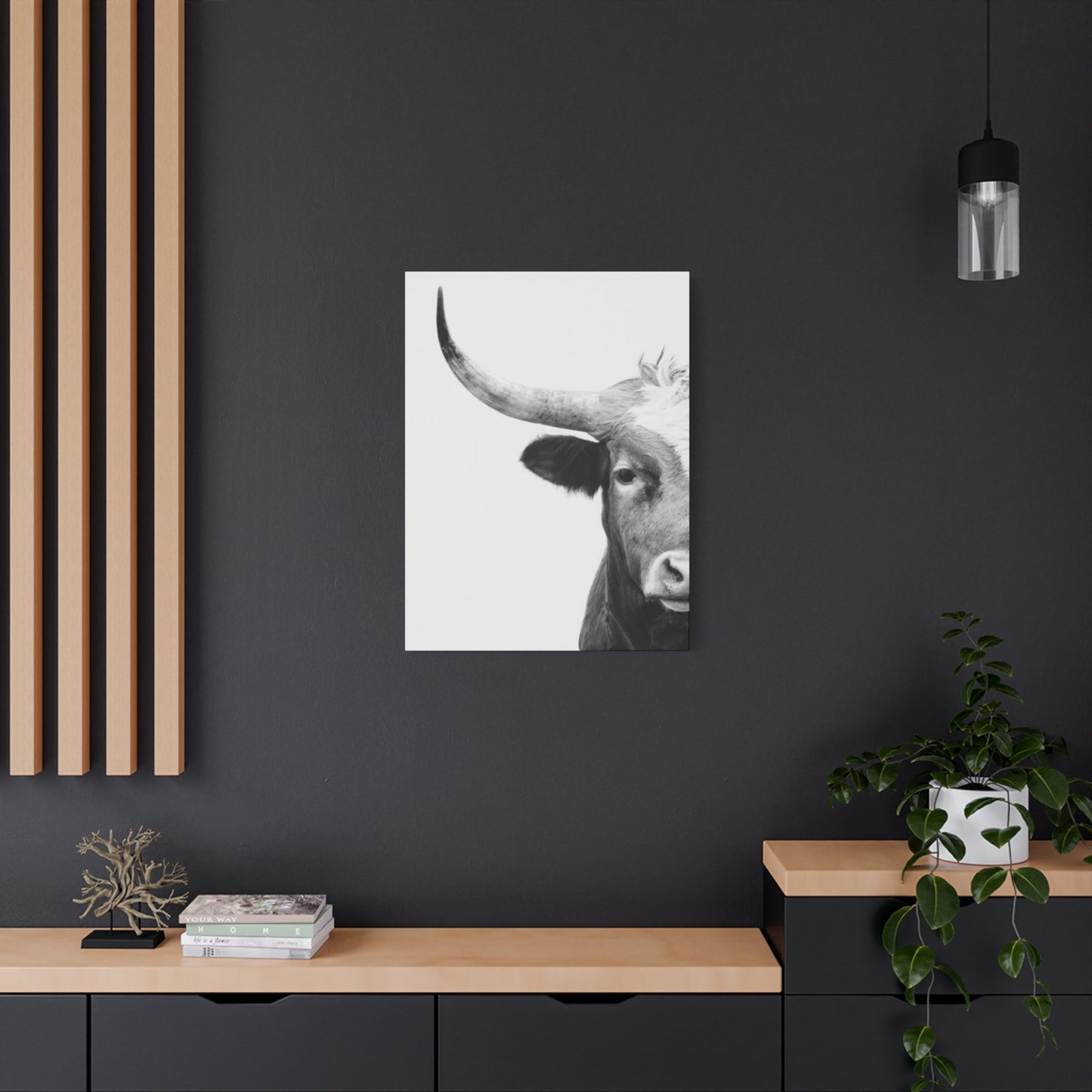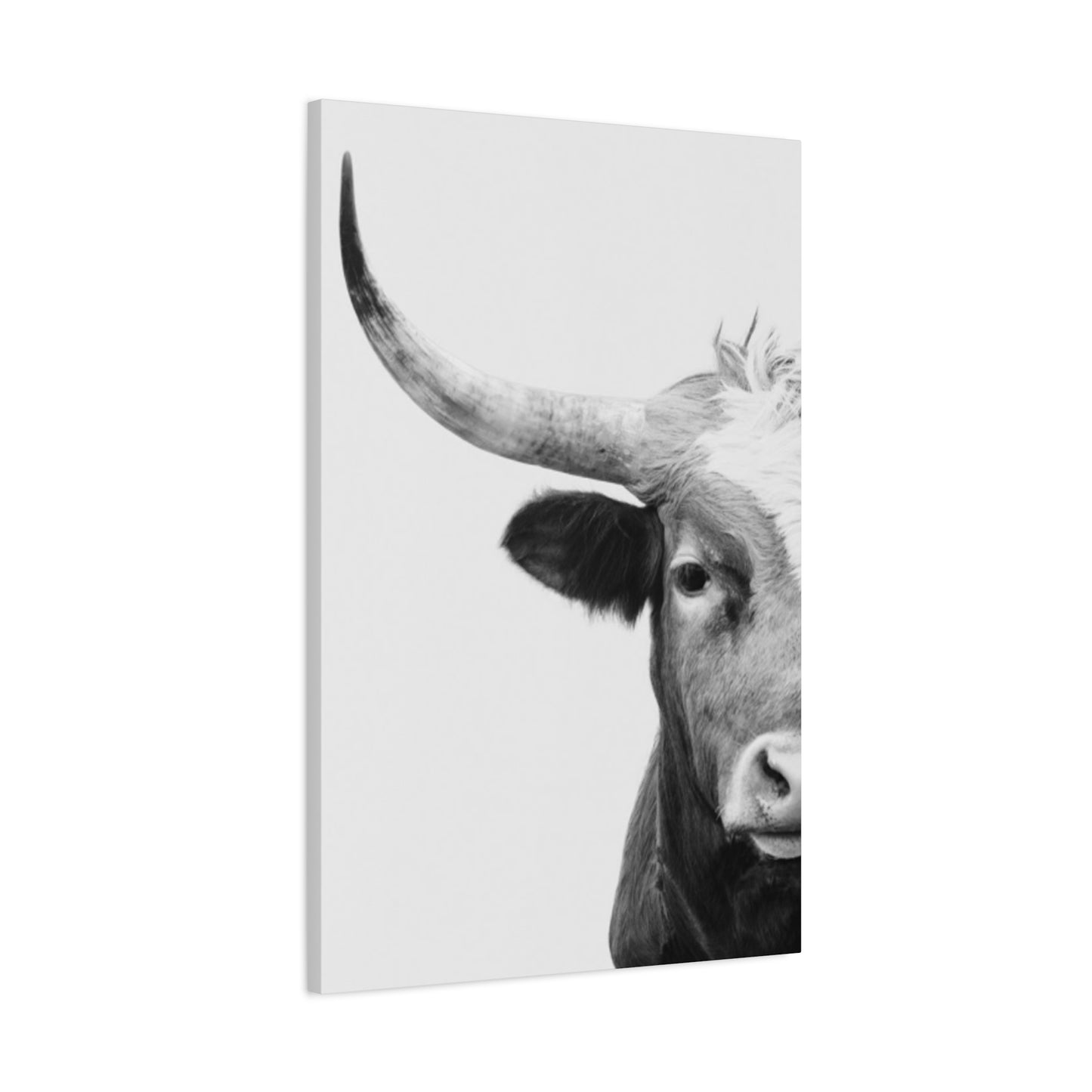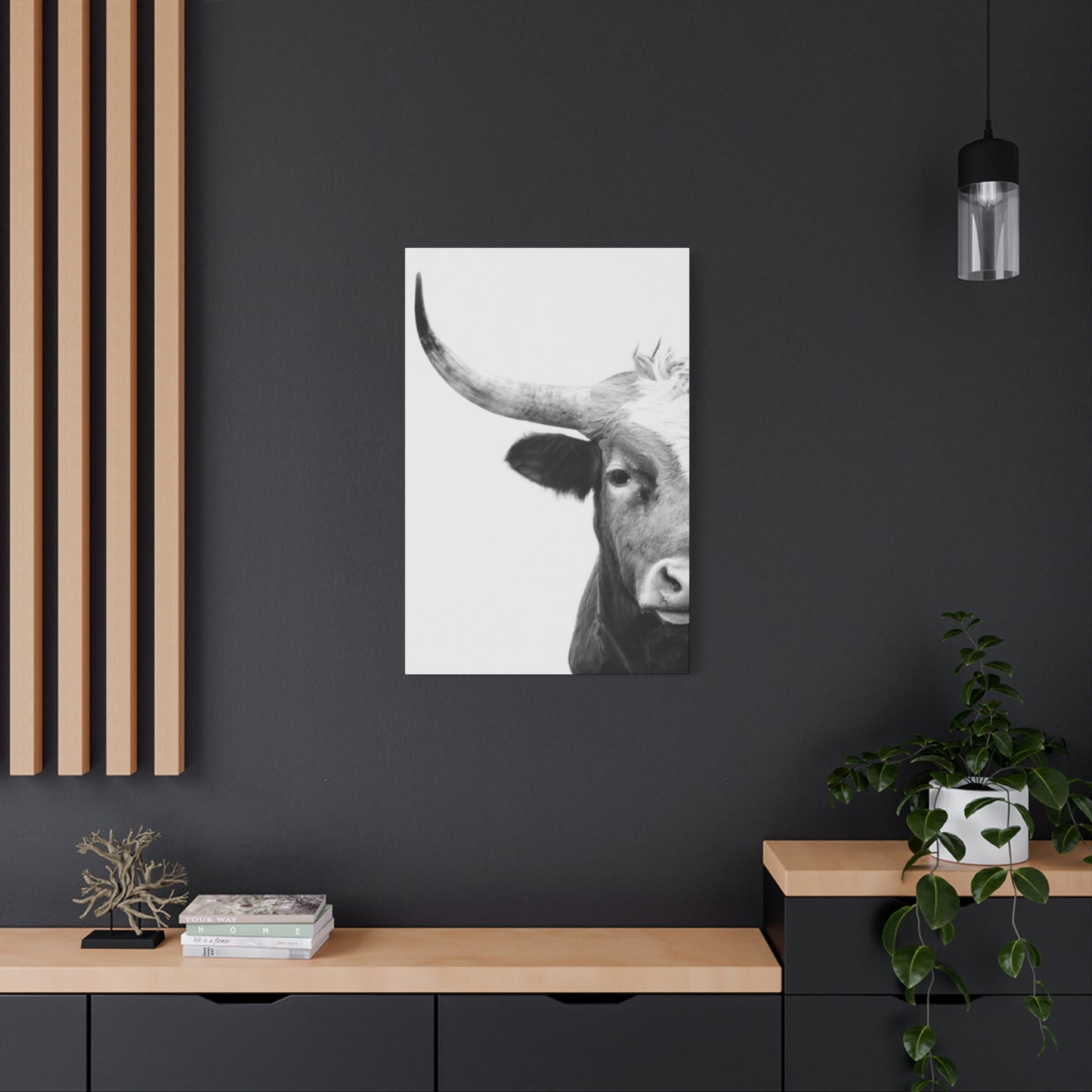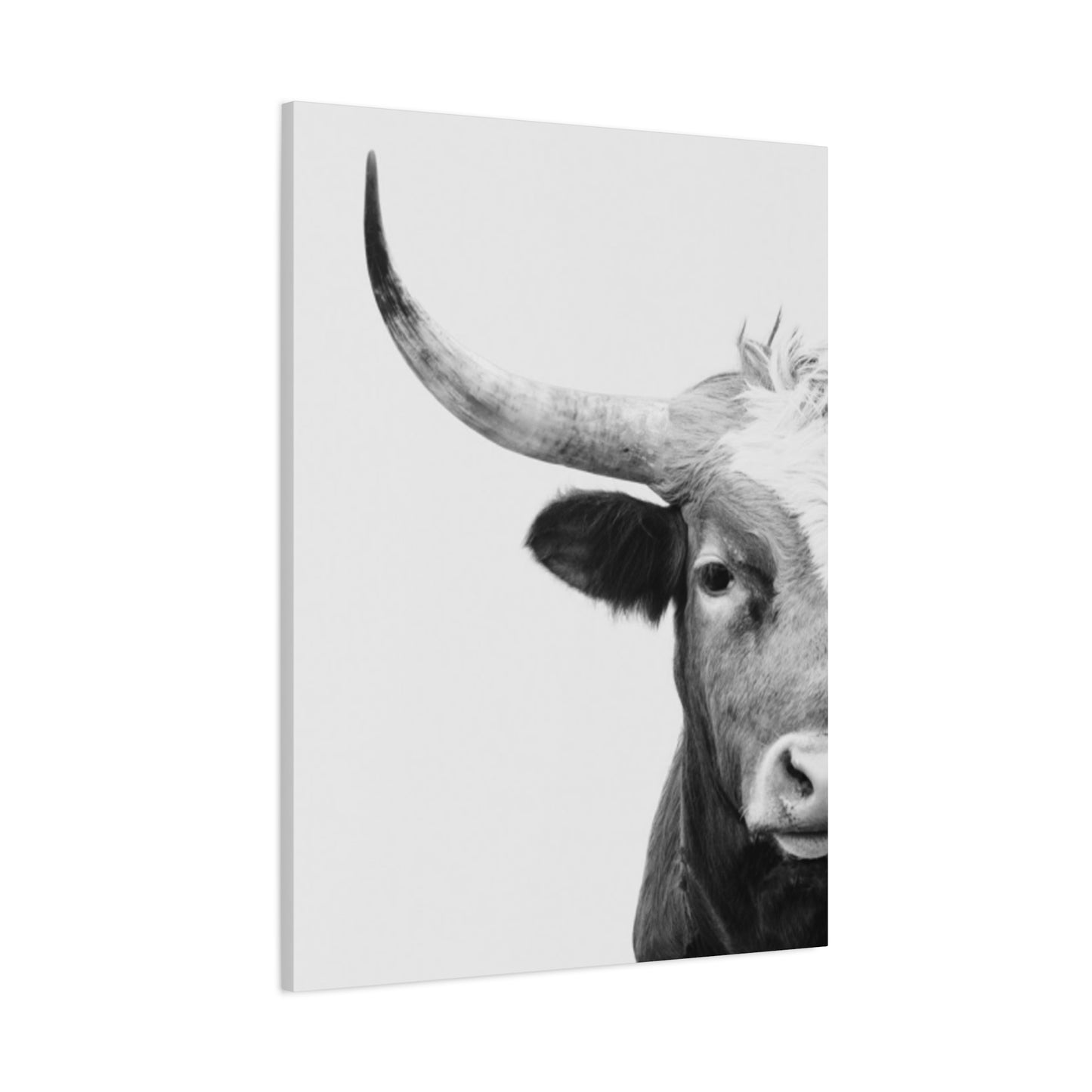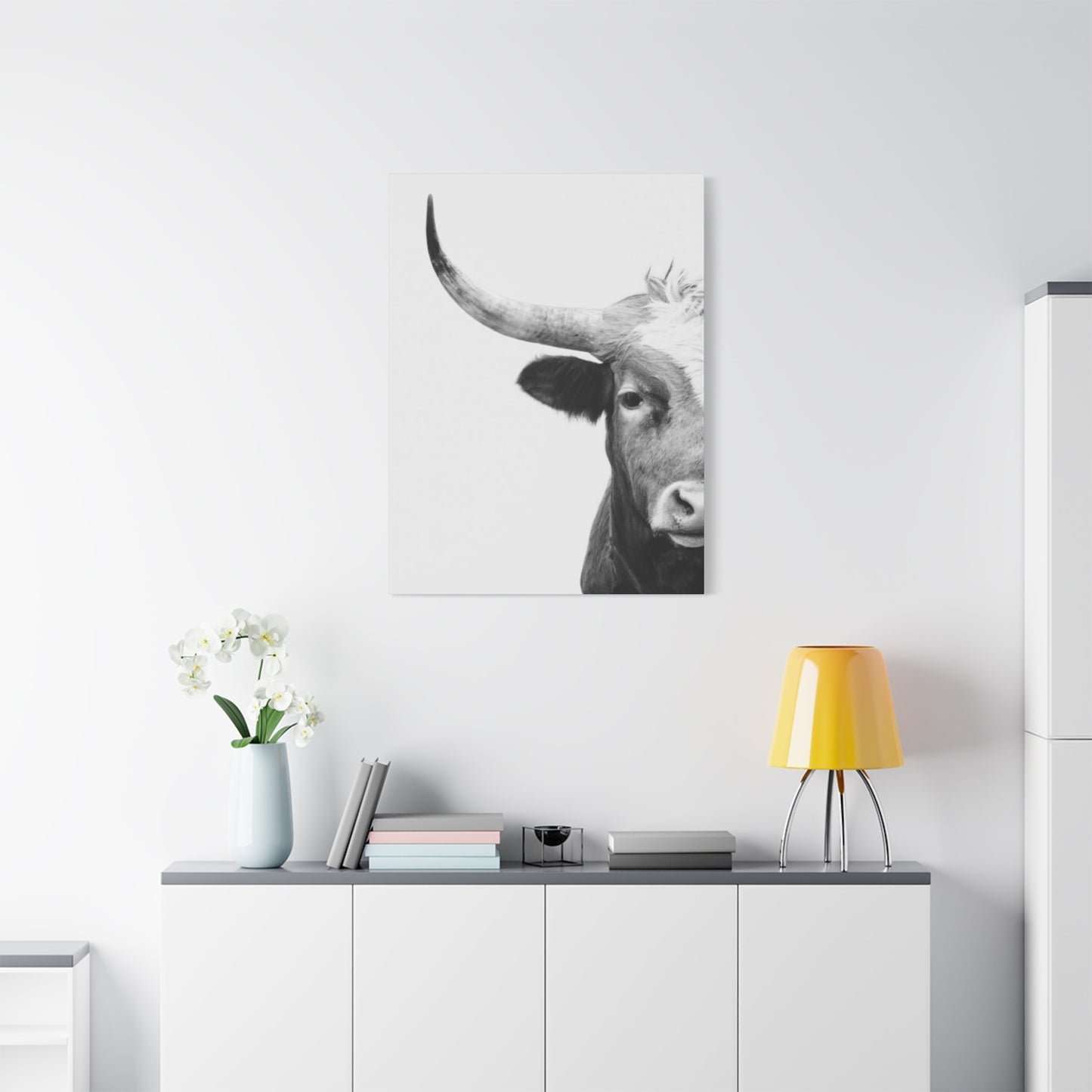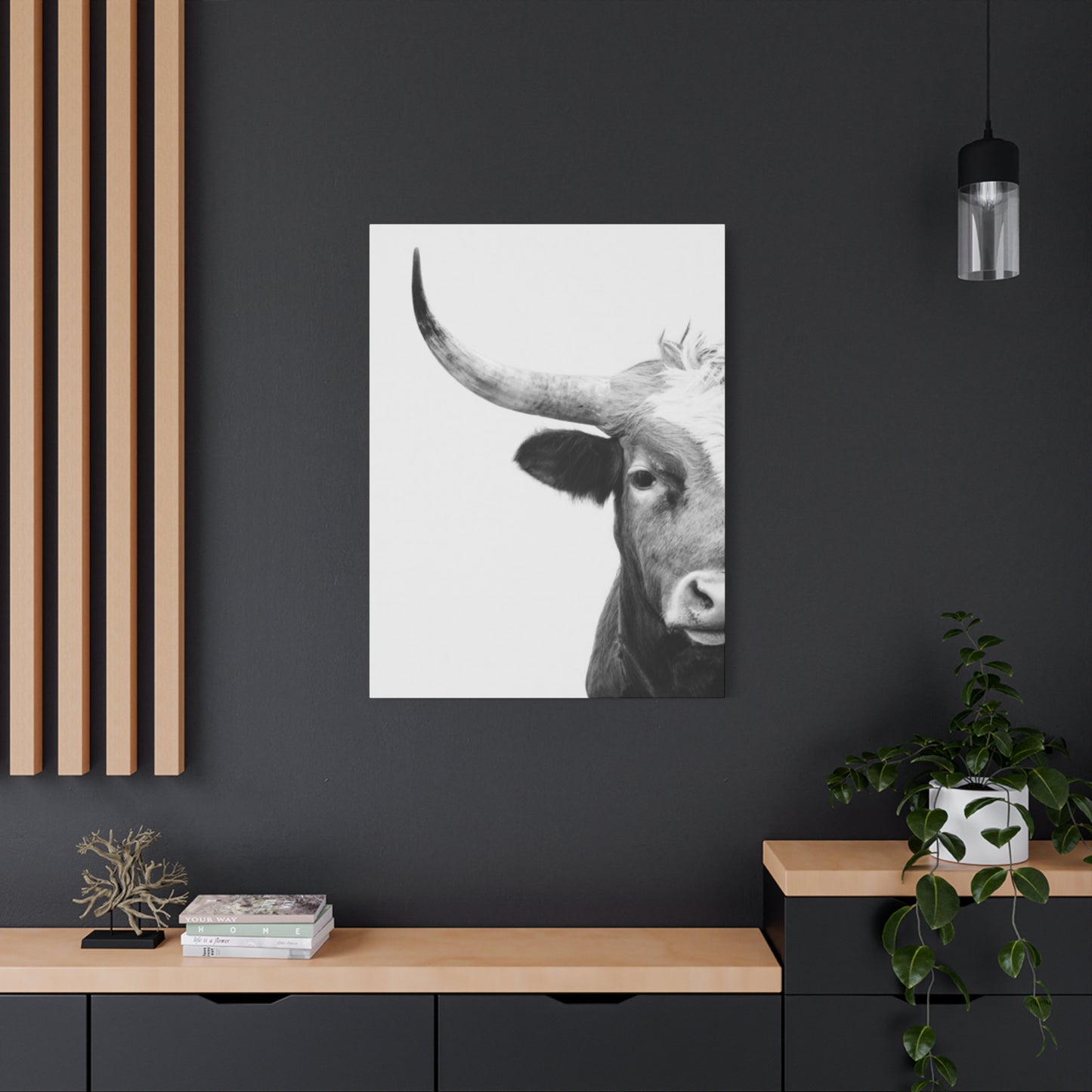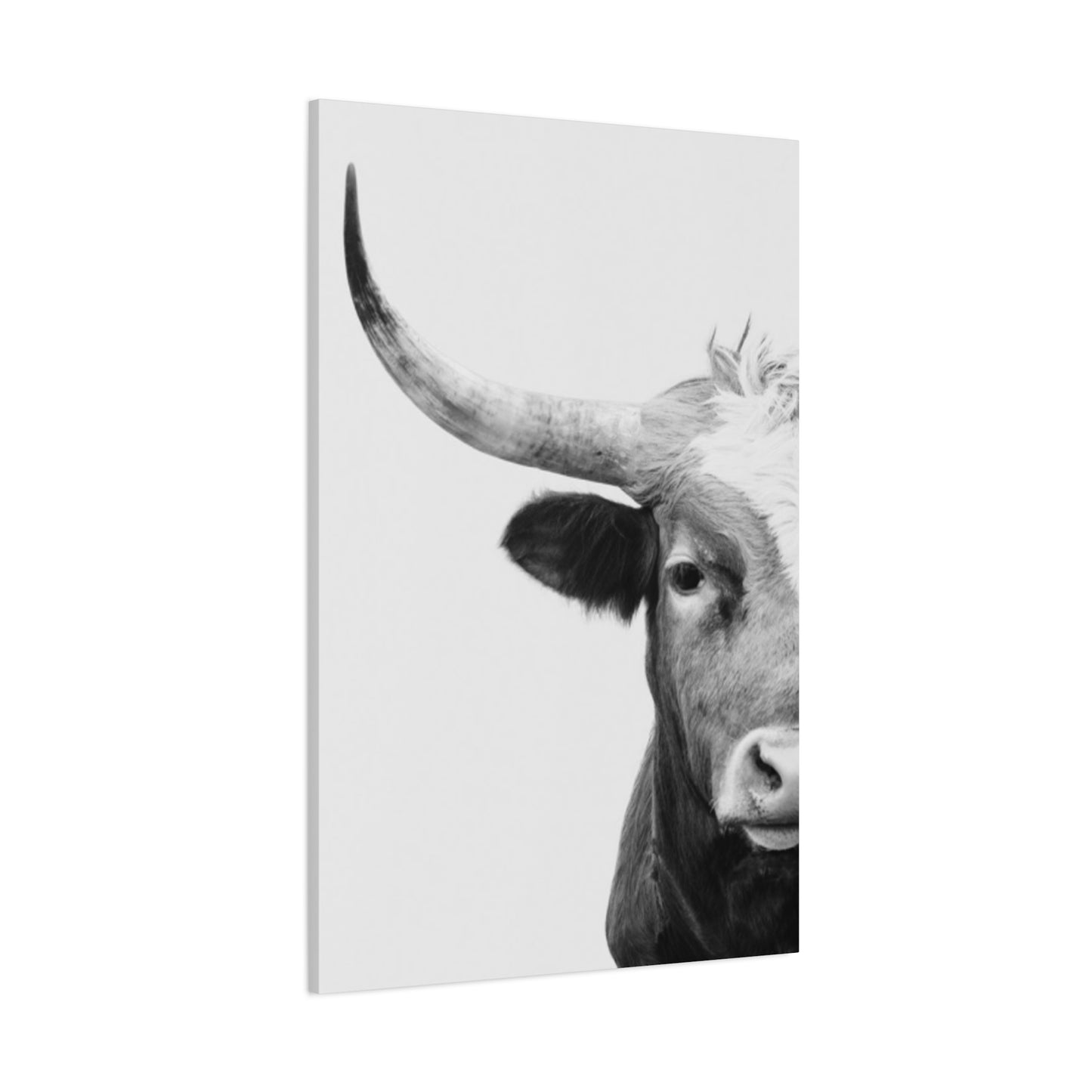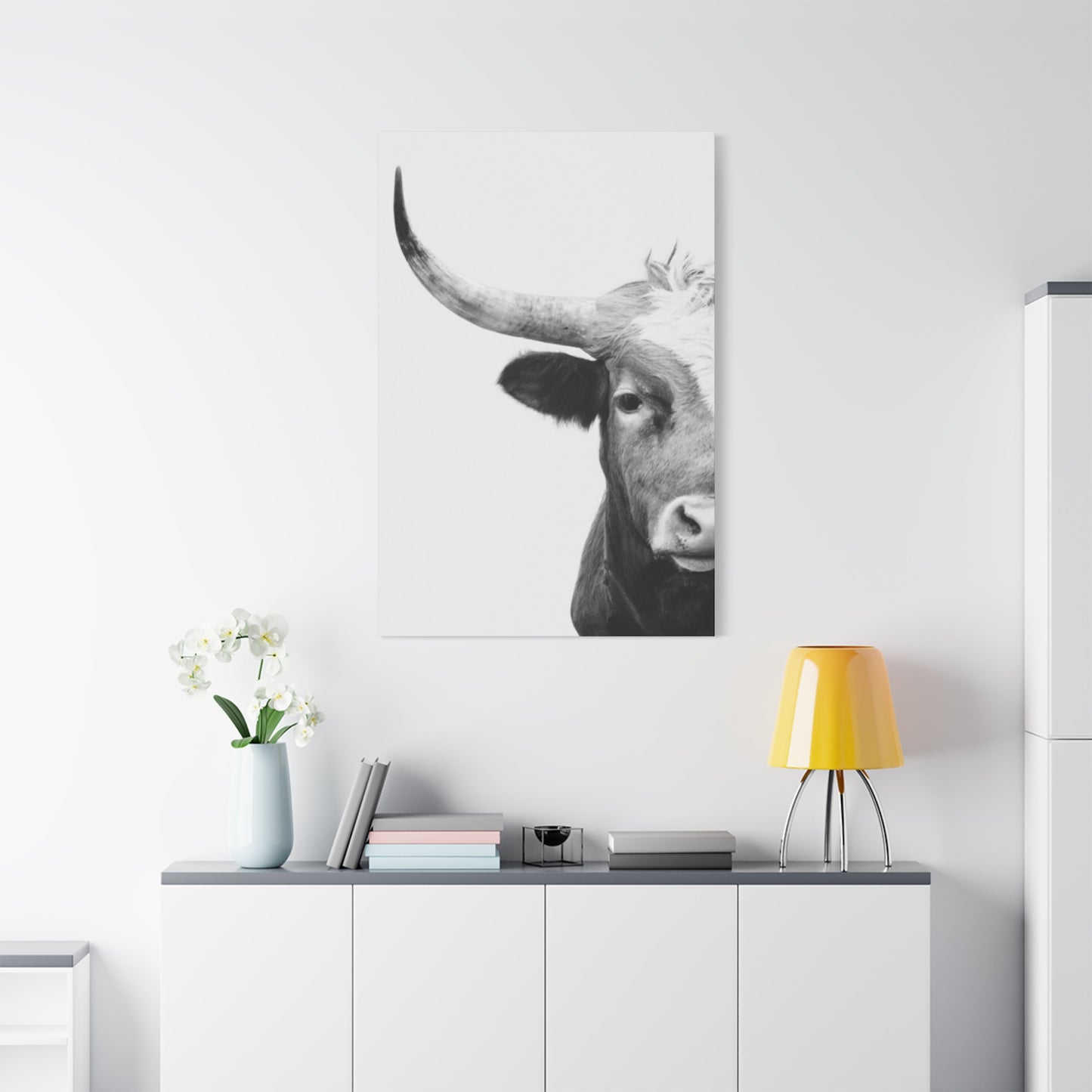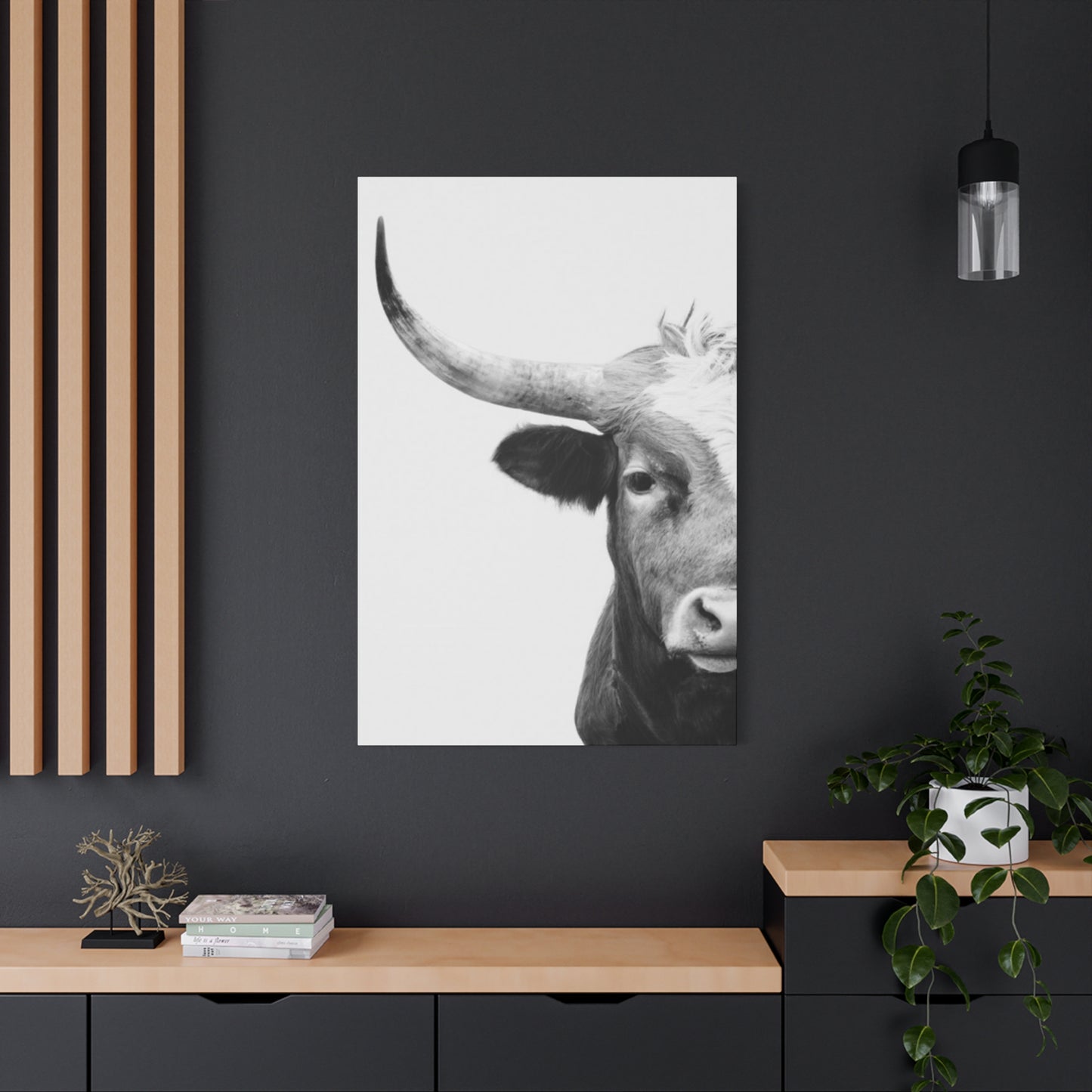Majestic Longhorn Wall Art: Creating Stunning Western Photography Displays
The captivating presence of longhorns has enchanted photographers and art enthusiasts for decades, creating a timeless appeal that transcends traditional home decorating boundaries. These magnificent creatures, with their impressive horn spans and stoic expressions, offer an unparalleled opportunity to bring the rugged beauty of the American West into residential settings. Longhorn photography represents more than mere decoration; it embodies a connection to heritage, strength, and the untamed spirit of frontier life.
When considering longhorn wall art for your home, you're not simply selecting decorative elements but rather choosing pieces that carry profound cultural significance and artistic merit. The sweeping horns of these remarkable animals create natural focal points that command attention while maintaining an elegant presence within any room. Professional photographers have mastered the art of capturing these creatures in their natural habitat, producing imagery that celebrates both the animal's physical magnificence and the atmospheric beauty of wide-open landscapes.
The popularity of western-themed photography has experienced remarkable growth in recent years, with longhorn imagery leading this trend. Homeowners increasingly seek authentic representations of American heritage, finding in these photographs a perfect blend of artistic sophistication and cultural depth. The versatility of longhorn photography allows it to complement various decorating styles, from rustic farmhouse aesthetics to contemporary minimalist approaches, making it an exceptionally adaptable choice for diverse home environments.
Professional longhorn photography showcases the artistic potential of wildlife imagery, demonstrating how skilled photographers can transform simple animal portraits into compelling artistic statements. The interplay between light and shadow across the longhorn's distinctive features creates dramatic compositions that rival traditional landscape photography in their visual impact. These images capture not only the physical characteristics of the animals but also the essence of the environments they inhabit, bringing viewers into direct contact with the majesty of western landscapes.
Creating Authentic Western Atmospheres Through Longhorn Photography
Establishing an authentic western atmosphere through longhorn photography requires thoughtful consideration of both the individual pieces and their collective impact within your living environment. The key lies in understanding how these powerful images can transform ordinary rooms into compelling spaces that celebrate western heritage while maintaining contemporary appeal. Longhorn photography possesses an inherent ability to anchor decorating schemes, providing strong visual elements around which entire room designs can evolve.
The selection process for longhorn wall art should begin with careful evaluation of your existing furnishings and color schemes. These photographs work exceptionally well with earth-tone palettes, complementing warm browns, deep reds, and muted greens that echo the natural landscapes where longhorns roam. However, the versatility of black-and-white longhorn photography allows for integration with virtually any color scheme, offering dramatic contrast that enhances both traditional and contemporary decorating approaches.
Consider the emotional impact you wish to create when selecting longhorn photography for your home. Close-up portraits of individual longhorns create intimate, contemplative atmospheres, while wide landscape shots featuring herds against expansive backdrops generate feelings of freedom and adventure. The choice between color and monochrome photography also significantly influences the overall mood, with sepia-toned images evoking nostalgia and full-color photographs celebrating the vibrancy of western life.
The placement of longhorn photography within your home should reflect the natural hierarchy of these commanding subjects. Living rooms and family gathering areas benefit from larger-scale pieces that can serve as conversation starters, while hallways and bedrooms accommodate more intimate compositions that reward closer viewing. The key is ensuring that each piece receives adequate viewing distance to fully appreciate the photographer's artistic vision and the subject's natural majesty.
Lighting considerations play a crucial role in maximizing the impact of longhorn wall art. These photographs often feature subtle gradations of tone and texture that require appropriate illumination to achieve their full effect. Natural lighting enhances the authenticity of outdoor scenes, while carefully positioned accent lighting can highlight specific elements within the composition, creating dramatic focal points that draw viewers into the image.
Selecting Premium Longhorn Photography for Maximum Visual Impact
The process of selecting premium longhorn photography demands attention to technical excellence, artistic composition, and print quality. Professional wildlife photographers specializing in longhorn subjects possess unique skills in capturing these animals at their most compelling, understanding both animal behavior and the environmental conditions that create exceptional photographic opportunities. Their expertise results in images that transcend simple documentation, achieving true artistic merit.
Composition quality serves as the foundation for exceptional longhorn photography, with skilled photographers utilizing principles of visual balance, leading lines, and natural framing to create compelling images. The positioning of longhorns within the frame can dramatically affect the photograph's emotional impact, with centered compositions creating stability and off-center placements generating dynamic tension. Professional photographers also understand how to use the natural environment to complement their subjects, incorporating elements such as dramatic skies, textural foregrounds, and atmospheric conditions.
Technical execution separates amateur snapshots from professional-grade longhorn photography suitable for home display. High-resolution captures ensure that fine details remain crisp even in large-format prints, while proper exposure techniques preserve detail in both highlight and shadow areas. Color accuracy becomes particularly important when reproducing the subtle earth tones and warm lighting conditions typical of western environments, requiring careful attention to color management throughout the production process.
Print quality represents the final determinant of longhorn photography excellence, with archival printing methods ensuring longevity and color stability over time. Professional-grade papers and pigment-based inks create prints that maintain their impact for decades when properly displayed and cared for. The choice of printing substrate can also enhance the photograph's character, with textured papers adding tactile interest and matte finishes reducing unwanted reflections while preserving detail.
Authentication and provenance become increasingly important as the market for western photography continues to grow. Original prints from established photographers carry greater long-term value than reproduction pieces, while signed and numbered limited editions offer exclusivity that enhances both aesthetic and investment appeal. Researching photographer credentials, exhibition history, and critical recognition helps ensure that your longhorn photography selection represents genuine artistic achievement rather than merely decorative imagery.
Architectural Considerations for Longhorn Photography Display
The architectural characteristics of your home significantly influence how longhorn photography should be displayed to achieve optimal visual impact. Room proportions, ceiling heights, and natural lighting conditions all affect how these powerful images will appear within your living environment. Understanding these factors enables you to make informed decisions about sizing, placement, and framing that enhance both the photography and your home's architectural features.
Wall dimensions provide the fundamental framework for longhorn photography selection, with larger walls accommodating statement pieces that can dominate entire rooms. These expansive compositions work particularly well in great rooms, dining areas, and master bedrooms where their scale can be fully appreciated. Conversely, smaller walls benefit from more intimate compositions that invite closer viewing and contemplation, creating personal connections with the subject matter.
Ceiling height influences the vertical positioning of longhorn photography, with higher ceilings allowing for elevated placement that can enhance the sense of grandeur these subjects naturally possess. Standard eight-foot ceilings require more careful positioning to maintain proper viewing angles while avoiding the cramped appearance that can result from oversized pieces in confined areas. The relationship between photograph size and ceiling height should maintain proportional harmony that feels natural and unforced.
Natural lighting patterns within your home create opportunities and challenges for longhorn photography display. South-facing walls receive consistent illumination throughout the day, ideal for color photography that benefits from natural light revelation. North-facing walls provide even, indirect lighting that prevents harsh shadows while maintaining consistent viewing conditions. East and west exposures create dramatic lighting changes throughout the day, which can either enhance or detract from photographic viewing depending on the specific composition and subject matter.
Architectural details such as crown molding, chair rails, and built-in features should be considered when planning longhorn photography installations. These elements can either complement or compete with photographic compositions, requiring careful coordination to achieve harmonious integration. In some cases, architectural features can be used to enhance the display, such as using built-in alcoves to create gallery-like presentations or incorporating existing trim work into custom framing solutions.
Color Harmony and Longhorn Photography Integration
Achieving successful color harmony between longhorn photography and existing home environments requires understanding both the inherent color characteristics of western imagery and the psychological effects of color combinations. Longhorn photography typically features warm, earth-based color palettes that reflect the natural environments these animals inhabit, including golden grasslands, rugged terrain, and dramatic skies that range from deep blues to fiery sunset hues.
The dominant colors found in longhorn photography generally include various shades of brown, from the rich chocolate tones of the animals' coats to the lighter tans and beiges of their horns and surrounding landscape elements. These neutral tones provide excellent foundation colors that work harmoniously with most existing decorating schemes while adding warmth and natural authenticity to any room. Understanding how these inherent colors interact with your current palette enables more successful integration.
Complementary color relationships offer opportunities to enhance longhorn photography through strategic accent choices. The warm browns and tans typical of these images pair beautifully with cool blues and greens, creating balanced compositions that feel both vibrant and harmonious. These complementary relationships can be expressed through throw pillows, accent furniture, or decorative accessories that echo colors found within the photography while adding visual interest through contrast.
Analogous color schemes, utilizing colors adjacent to each other on the color wheel, create more subtle and sophisticated integration approaches. Building upon the warm earth tones found in longhorn photography, you might incorporate deeper reds, oranges, and yellows to create rich, cohesive environments that celebrate the warmth and vitality of western themes. This approach works particularly well in traditional and transitional decorating styles that emphasize comfort and authenticity.
Monochromatic approaches utilizing various shades and tints of single colors can create sophisticated backgrounds for longhorn photography display. Rooms decorated in varying shades of warm gray, for example, provide neutral canvases that allow the photography to serve as the primary color element while maintaining overall design cohesion. This strategy works especially well with black-and-white longhorn photography, creating dramatic presentations that emphasize form and composition over color relationships.
Textural Relationships and Material Coordination
The integration of longhorn photography with existing home textures requires careful attention to both visual and tactile relationships that enhance the overall sensory experience. These powerful images possess inherent textural qualities that can be either emphasized or balanced through thoughtful coordination with furniture, fabrics, and architectural materials. Understanding how to leverage these relationships creates more engaging and cohesive living environments.
Natural materials provide ideal companionship for longhorn photography, with wood, leather, and stone surfaces echoing the outdoor environments where these animals thrive. Rich hardwood floors and furniture pieces create warm foundations that complement the earth tones typical of western photography, while leather upholstery adds tactile richness that reinforces the rugged authenticity these images represent. Stone accents, whether in fireplace surroundings or architectural details, provide textural contrast that enhances the natural themes.
Fabric selections play crucial roles in creating successful textural relationships with longhorn photography. Natural fibers such as cotton, linen, and wool provide appropriate textural authenticity that supports western themes without overwhelming the photographic subjects. Subtle patterns and textures in upholstery and window treatments can add visual interest while maintaining the sophisticated simplicity that allows longhorn photography to remain the focal point.
Metal accents offer opportunities to introduce textural variety while maintaining thematic consistency with longhorn photography. Wrought iron elements, copper accessories, and aged bronze finishes echo the industrial heritage of western ranch life while providing textural contrast to the organic subjects depicted in the photography. These metallic elements should be used judiciously to avoid overwhelming the natural harmony that makes longhorn imagery so compelling.
Textile layering techniques can create rich, inviting environments that complement longhorn photography while adding comfort and visual warmth. Combining various natural textures through throw pillows, area rugs, and window treatments creates depth and interest that enhances the viewing experience without competing for attention. The key lies in maintaining textural harmony that supports rather than distracts from the photographic subjects.
Professional Framing Solutions for Western Photography
Professional framing represents a critical component in successfully displaying longhorn photography, with frame selection significantly impacting both the aesthetic appeal and long-term preservation of these valuable artworks. The relationship between photograph and frame should enhance rather than overwhelm the subject matter, creating presentations that honor both the photographer's artistic vision and the magnificent subjects they've captured.
Traditional wood framing options provide natural harmony with longhorn photography, particularly frames crafted from materials that echo western environments. Rustic barn wood, weathered oak, and rich walnut finishes create authentic presentations that reinforce the natural themes while providing substantial visual weight appropriate for these commanding subjects. The grain patterns and natural variations found in wood frames add subtle textural interest that complements rather than competes with the photography.
Metal framing solutions offer more contemporary approaches to longhorn photography display while maintaining appropriateness for western themes. Brushed bronze and copper finishes provide warm metallic tones that harmonize with earth-based color palettes, while pewter and aged steel finishes add subtle contrast without overwhelming the natural subjects. The clean lines typical of metal frames can create striking presentations that emphasize the photographic composition while maintaining sophisticated simplicity.
Matting considerations significantly influence the final presentation of longhorn photography, with proper mat selection enhancing the viewing experience while providing necessary protection for the artwork. Neutral mat colors such as cream, warm white, and subtle earth tones provide clean backgrounds that allow the photography to dominate the presentation. Multiple mat layers can add visual depth and sophistication while creating separation between the photograph and frame that prevents visual competition.
Conservation framing techniques ensure the long-term preservation of valuable longhorn photography while maintaining optimal display quality. Acid-free materials, UV-protective glazing, and proper mounting techniques prevent deterioration while maintaining the vibrant colors and sharp details that make these images so compelling. Investment in proper conservation framing protects both the artistic and monetary value of premium photography collections.
Creating Dynamic Gallery Wall Compositions
Gallery wall compositions featuring longhorn photography offer opportunities to create compelling focal points that celebrate western themes while demonstrating sophisticated curatorial sensibilities. The process of combining multiple photographs requires careful attention to visual balance, thematic cohesion, and spatial relationships that create unified presentations greater than the sum of their individual components.
The foundation of successful gallery walls lies in establishing clear thematic connections between selected pieces while maintaining enough variety to sustain visual interest. Longhorn photography provides excellent material for gallery wall development, with opportunities to combine close-up portraits, landscape contexts, and atmospheric studies that tell comprehensive visual stories. The key is ensuring that each piece contributes to the overall narrative while maintaining individual artistic merit.
Size relationships between photographs significantly influence gallery wall success, with varied dimensions creating dynamic visual rhythms that engage viewers and guide their attention throughout the composition. Combining large anchor pieces with smaller supporting images creates hierarchical arrangements that establish clear focal points while maintaining overall balance. The spacing between individual pieces should feel intentional and harmonious, creating visual breathing room that prevents overwhelming presentations.
Alignment strategies for gallery wall installations require careful planning to achieve professional-quality results that enhance your home's sophistication. Grid-based arrangements create formal, organized presentations that work well in traditional and transitional environments, while organic, salon-style hangings offer more relaxed approaches appropriate for casual and rustic settings. The chosen alignment strategy should reflect both the photography's character and your home's overall aesthetic direction.
Height considerations for gallery wall installations should account for optimal viewing angles that allow appreciation of individual pieces while maintaining overall composition integrity. The standard guideline of positioning artwork at eye level provides a starting point, but adjustments may be necessary based on furniture placement, room function, and the specific characteristics of your selected photography. Consistent height relationships between pieces create visual coherence that enhances the professional appearance of the installation.
Lighting Design for Optimal Photography Presentation
Proper lighting design represents a crucial element in maximizing the impact and longevity of longhorn photography displays, with appropriate illumination revealing subtle details and enhancing emotional impact while protecting valuable artworks from damage. Understanding the relationship between light and photography enables creation of presentations that honor the photographer's artistic intent while creating compelling viewing experiences.
Natural lighting considerations should guide the initial placement decisions for longhorn photography, with awareness of how changing light conditions throughout the day will affect viewing experiences. Morning light provides soft, warm illumination that enhances earth-tone subjects, while afternoon light can create dramatic effects that emphasize texture and form. Avoiding direct sunlight prevents fading and deterioration while maintaining the optimal viewing conditions these sophisticated artworks deserve.
Artificial lighting solutions offer precise control over how longhorn photography appears within your home, with various options available to enhance specific aspects of the images. Track lighting systems provide flexibility in positioning and intensity while creating dramatic presentations that can be adjusted for different viewing occasions. Picture lights offer focused illumination that creates gallery-quality presentations while adding architectural interest to wall displays.
LED technology has revolutionized photography lighting, providing energy-efficient solutions that produce minimal heat while offering excellent color rendering properties. The ability to adjust color temperature allows fine-tuning of how warm and cool tones within longhorn photography appear, creating optimal viewing conditions that reveal the full range of colors and tones captured by the photographer. Dimming capabilities enable adjustment of lighting intensity to match room activities and personal preferences.
Accent lighting strategies can enhance longhorn photography presentations while creating dramatic architectural effects that elevate the overall sophistication of your home. Uplighting can create atmospheric backgrounds that complement the photography without competing for attention, while strategically placed spotlights can highlight specific elements within compositions to guide viewer attention and enhance emotional impact.
Seasonal Considerations for Western Photography Display
The seasonal nature of home decorating offers opportunities to enhance longhorn photography displays through thoughtful coordination with changing environmental conditions and holiday celebrations. Understanding how these powerful images can be integrated with seasonal decorating approaches creates year-round appeal while maintaining the timeless quality that makes western photography so enduringly popular.
Spring decorating approaches can celebrate the renewal and vitality that longhorn photography naturally embodies, with the strength and resilience of these magnificent animals echoing themes of growth and new beginnings. Fresh color accents in soft greens and warm yellows can complement the earth tones typical of western photography while creating seasonal connections that feel natural and unforced. The key is maintaining the sophisticated presentation these artworks deserve while acknowledging seasonal transitions.
Summer styling opportunities emphasize the outdoor connection inherent in longhorn photography, with the freedom and open-air lifestyle these images represent perfectly suited to warm-weather decorating approaches. Lighter textiles, natural materials, and increased natural lighting can enhance the viewing experience while creating connections between indoor displays and outdoor living. The robust character of longhorn subjects provides excellent anchors for casual summer decorating while maintaining artistic sophistication.
Autumn presentations can leverage the warm color palettes naturally found in longhorn photography, with the golden browns and rich earth tones providing perfect foundations for seasonal decorating. The addition of warm accent colors such as deep oranges, rustic reds, and golden yellows can create cohesive presentations that celebrate both the photography and the season while maintaining year-round appropriateness. Natural elements such as dried grasses and weathered wood can enhance the authenticity without overwhelming the artistic presentations.
Winter approaches to longhorn photography display can emphasize the strength and endurance these animals represent, with their ability to thrive in challenging conditions providing inspiring themes for cold-weather months. Warmer lighting, richer textures, and deeper color accents can create cozy environments that showcase the photography while providing comfort and visual warmth during shorter days and longer nights.
Investment Value and Market Appreciation
The longhorn photography market has demonstrated consistent growth and appreciation, making these artworks attractive from both aesthetic and investment perspectives. Understanding the factors that influence market value enables informed purchasing decisions that provide both immediate decorating satisfaction and potential long-term financial benefit. The combination of artistic merit, cultural significance, and limited availability continues to drive demand for premium western photography.
Artist reputation represents the primary factor influencing longhorn photography values, with established photographers commanding premium prices for their work while emerging artists offer opportunities for future appreciation. Researching photographer backgrounds, exhibition histories, and critical recognition provides insight into potential investment value while ensuring authentic artistic quality. The limited production runs typical of fine art photography create scarcity that supports long-term value appreciation.
Print quality and authenticity significantly impact both immediate appeal and long-term value retention in longhorn photography. Original prints from photographer-supervised editions maintain higher values than reproduction prints, while proper documentation and provenance verification protect investment interests. The use of archival materials and professional printing techniques ensures that physical quality matches artistic merit, protecting both aesthetic and monetary value over time.
Market trends in western and wildlife photography continue to show strong growth, with increasing interest from collectors and decorators driving demand for exceptional pieces. The cultural significance of longhorn imagery within American heritage creates enduring appeal that transcends temporary decorating fads, providing stability for long-term value appreciation. Geographic factors also influence market dynamics, with western regions showing particularly strong demand for authentic ranch and wildlife photography.
Collection development strategies can maximize both decorating impact and investment potential through thoughtful acquisition approaches that build comprehensive representations of longhorn photography themes. Building relationships with reputable galleries and photographers provides access to exceptional pieces while ensuring authenticity and proper documentation. The development of focused collections around specific photographers, techniques, or themes creates coherent presentations with enhanced market appeal.
Care for Longhorn Photography Collections
Proper maintenance and care procedures ensure that longhorn photography collections retain their visual impact and monetary value over time, with preventive measures being more effective and economical than restoration efforts. Understanding the specific vulnerabilities of photographic materials enables implementation of care routines that protect these valuable artworks while maintaining optimal display conditions.
Environmental control represents the foundation of effective photography preservation, with stable temperature and humidity conditions preventing the expansion and contraction cycles that can damage photographic materials. Ideal conditions maintain temperatures between 65-70 degrees Fahrenheit with relative humidity levels of 45-55 percent, creating stable environments that minimize stress on paper and ink materials. Rapid fluctuations in either temperature or humidity can cause immediate and long-term damage that may be irreversible.
Light exposure management prevents the fading and color shifts that represent the most common threats to photographic displays. UV-filtering glazing in frames provides essential protection from harmful ultraviolet radiation while maintaining clear viewing quality. Controlling artificial lighting levels and avoiding direct sunlight exposure preserves color accuracy and prevents the gradual deterioration that can diminish both aesthetic and monetary value over time.
Cleaning and maintenance routines should focus on prevention rather than intervention, with regular attention to framing and display conditions preventing most problems before they develop. Professional cleaning services should be utilized for valuable pieces, as improper cleaning attempts can cause permanent damage to delicate photographic surfaces. Regular inspection of framing materials, glazing condition, and mounting systems identifies potential problems before they affect the photography.
Documentation and inventory management protect both the artistic and financial aspects of longhorn photography collections through proper record keeping and condition monitoring. Detailed records of purchase information, condition reports, and maintenance history provide essential information for insurance purposes while tracking the collection's development over time. Professional appraisals should be updated periodically to reflect current market values and ensure adequate insurance coverage.
Cultural Heritage and Symbolic Significance
The cultural heritage embodied in longhorn photography extends far beyond mere decoration, representing connections to American history, western expansion, and the pioneering spirit that shaped national character. These magnificent animals served crucial roles in the development of the American West, making their photographic representation carriers of historical significance that enriches any home environment with authentic cultural depth.
Historical context surrounding longhorn cattle reveals their essential contribution to American economic development through the cattle drives that connected Texas ranches with northern markets in the late 19th century. The legendary drives along trails such as the Chisholm Trail created the foundation for the American beef industry while establishing the iconic imagery that continues to captivate photographers and art collectors today. This historical significance adds cultural weight to contemporary longhorn photography that transcends simple aesthetic appeal.
Symbolic meanings associated with longhorn imagery include strength, independence, endurance, and connection to the land that resonate with contemporary values while honoring traditional American ideals. The impressive horn spans and stoic expressions captured in quality photography embody these characteristics in ways that create emotional connections with viewers, making these pieces more than decorative elements but rather representations of admired qualities and aspirations.
Regional variations in longhorn photography reflect different geographic and cultural perspectives while maintaining thematic consistency that makes collection development both interesting and coherent. Texas photographers naturally emphasize the historical connections and ranch heritage, while artists from other western states may focus more on landscape integration and environmental relationships. These variations provide opportunities for collection diversity while maintaining cultural authenticity.
Contemporary relevance of longhorn imagery speaks to ongoing connections between modern life and traditional values, with these photographs serving as reminders of simpler times and more direct relationships with the natural world. The increasing urbanization of American life creates nostalgia for rural experiences and authentic connections that longhorn photography can provide, making these pieces particularly meaningful for contemporary viewers seeking grounding and authenticity.
Professional Installation and Display Techniques
Professional installation techniques ensure that longhorn photography receives presentations worthy of both artistic merit and investment value, with proper mounting and hanging procedures protecting the artwork while maximizing visual impact. Understanding professional standards and techniques enables achievement of gallery-quality results that enhance both the photography and your home's overall sophistication.
Wall preparation represents the foundation of successful photography installation, with proper assessment of wall construction, stud location, and surface conditions ensuring secure mounting that protects valuable artworks. Different wall materials require specific hardware and techniques, with drywall installations requiring different approaches than masonry or paneled surfaces. Professional installers understand these variations and select appropriate hardware for each situation.
Hanging hardware selection should prioritize both security and adjustability, with high-quality picture hanging systems providing reliable support while enabling future repositioning if desired. Wire hanging systems distribute weight more evenly than single-point mounting while allowing easier adjustment of positioning and level. The hardware capacity should exceed the artwork weight by substantial margins to ensure long-term security and peace of mind.
Leveling and alignment procedures ensure professional-quality installations that enhance rather than detract from the photography's visual impact. Professional tools such as laser levels and measuring devices create precise installations that demonstrate attention to detail and respect for the artwork. Multiple-piece installations require particular care in maintaining consistent relationships between pieces while ensuring overall composition balance.
Security considerations become important for valuable photography collections, with proper installation techniques deterring theft while maintaining aesthetic appeal. Discrete security hardware can provide protection without compromising the visual presentation, while proper documentation through photography and serial numbering creates records that assist in recovery if theft occurs.
Collecting Strategies and Market Navigation
Successful collecting strategies for longhorn photography require understanding market dynamics, artist development, and long-term trends that influence both availability and value appreciation. Developing expertise in these areas enables informed purchasing decisions that provide both immediate satisfaction and potential investment returns while building collections with coherent themes and consistent quality.
Market research techniques help identify undervalued artists and emerging talents whose work may appreciate significantly over time. Following photography exhibitions, reviewing art publications, and monitoring auction results provides insight into market trends and artist reputation development. Building relationships with galleries and dealers creates access to exceptional pieces while providing expert guidance in collection development.
Authentication and provenance verification protect collectors from reproduction prints and misattributed works that lack investment potential. Understanding the documentation that accompanies authentic photography editions enables evaluation of potential purchases while protecting against fraud. Certificate of authenticity, edition information, and artist signatures provide essential verification that supports both aesthetic and investment value.
Budget development for photography collecting should consider both acquisition costs and ongoing expenses such as framing, insurance, and storage. Quality framing represents a significant investment that protects and enhances the photography while adding to the total cost of ownership. Insurance coverage should reflect current market values and be updated regularly to account for appreciation and new acquisitions.
Collection focus decisions influence both market success and personal satisfaction, with specialized collections often achieving greater recognition and value than diverse accumulations without clear themes. Focusing on specific photographers, geographic regions, or time periods creates coherent collections that demonstrate expertise and commitment while potentially achieving greater market recognition and appreciation.
Regional Variations and Geographic Influences
Geographic influences on longhorn photography create distinct regional variations that offer collectors opportunities to explore different artistic perspectives while maintaining thematic consistency. Understanding these regional differences enables more informed collecting decisions while appreciating the diverse ways photographers interpret these magnificent subjects within their specific environmental and cultural contexts.
Texas photography naturally emphasizes the historical and cultural significance of longhorns within the state's identity, with artists often incorporating ranch heritage and cattle drive history into their work. The vast landscapes and dramatic skies typical of Texas provide spectacular backdrops for longhorn photography while reinforcing the sense of scale and freedom these animals represent. Many Texas photographers possess deep personal connections to ranch life that inform their artistic approaches.
Western state photographers bring different perspectives to longhorn photography, often emphasizing environmental integration and landscape relationships over historical narratives. The diverse terrain found in states such as Colorado, Wyoming, and Montana provides varied settings that showcase longhorns within different ecological contexts. These regional variations offer collectors opportunities to explore how geography influences artistic interpretation while maintaining collection coherence.
International perspectives on American longhorn photography provide interesting contrasts to domestic work, with foreign photographers often emphasizing exotic and romantic aspects of western imagery. European and Asian photographers may focus on elements that seem most distinctly American to international audiences, creating work that offers fresh perspectives on familiar subjects. These international interpretations can add valuable diversity to collections while maintaining authentic subject matter.
Climate and environmental factors influence both the photography creation process and the subjects themselves, with different regions offering varying opportunities for exceptional image creation. Seasonal variations, weather patterns, and light quality all affect how longhorns appear in photographs, creating opportunities for diverse artistic expressions that reflect specific geographic characteristics and environmental conditions.
Technology and Contemporary Photography Techniques
Technological advancement in photography has revolutionized how longhorn subjects can be captured and presented, with digital capabilities enabling artistic approaches that were impossible with traditional film photography. Understanding these technological developments helps collectors appreciate contemporary work while recognizing how technical innovation contributes to artistic achievement in wildlife and landscape photography.
Digital photography advantages include increased shooting flexibility, immediate feedback capabilities, and enhanced post-processing options that allow photographers to refine their artistic vision. The ability to capture hundreds of images during a single session enables photographers to wait for perfect moments and expressions that might have been missed with film limitations. This technological capability directly translates to better final results in longhorn photography.
High-resolution capture capabilities enable the production of extremely large prints that maintain sharp detail and color accuracy, opening new possibilities for dramatic wall presentations that were previously impossible. Modern camera sensors can capture resolution levels that support prints several feet in dimension while maintaining the quality necessary for close viewing. These capabilities particularly benefit longhorn photography by allowing viewers to appreciate fine details in horn texture, hide patterns, and environmental elements.
Post-processing techniques available to contemporary photographers enable artistic interpretation and enhancement that extends creative possibilities while maintaining authentic representation of the subjects. Careful use of digital tools can enhance natural colors, improve contrast, and optimize composition without compromising the integrity of the original scene. The key lies in using technology to enhance rather than replace artistic vision and technical skill.
Printing technology advances have dramatically improved the longevity and quality of photographic prints, with pigment-based inks and archival papers creating artworks that maintain their impact for decades under proper display conditions. These technological improvements directly benefit collectors by ensuring that investments in contemporary longhorn photography will retain both aesthetic and monetary value over time.
Educational and Cultural Programming
Educational opportunities surrounding longhorn photography can enhance appreciation and understanding while connecting viewers with the cultural heritage these images represent. Museums, galleries, and cultural institutions increasingly recognize the educational value of western photography in teaching American history and cultural development through visual narratives that engage diverse audiences.
Workshop opportunities allow enthusiasts to develop their own photography skills while gaining deeper appreciation for the technical and artistic challenges involved in capturing exceptional longhorn images. Professional photographers often conduct workshops in ranch environments where participants can observe longhorns in their natural habitat while learning techniques for wildlife photography. These experiences provide invaluable education that enhances collection appreciation.
Museum exhibitions featuring longhorn photography provide cultural context that enriches understanding of both the artistic and historical significance of these images. Major institutions increasingly recognize western photography as legitimate artistic expression worthy of serious curatorial attention. Exhibition catalogs and educational materials from these shows provide valuable resources for collectors seeking deeper understanding of their acquisitions.
Cultural heritage programs often utilize longhorn photography as educational tools for teaching American history and regional development. These programs demonstrate how visual arts can effectively communicate historical narratives while engaging audiences who might not respond to traditional educational approaches. The combination of artistic appeal and educational content makes longhorn photography particularly valuable for cultural programming.
Academic research into western photography continues to develop scholarly framework that enhances critical understanding and market recognition of exceptional work. University programs in art history, American studies, and photography increasingly address western themes as legitimate subjects for serious academic inquiry. This scholarly attention contributes to market development and long-term value appreciation for quality pieces.
Conclusion
Longhorn wall art represents far more than simple decoration, embodying a rich tapestry of American heritage, artistic excellence, and cultural significance that transforms any home environment into a celebration of western values and natural beauty. The magnificent presence of these legendary animals, captured through the skilled lens of professional photographers, creates powerful visual statements that honor both our nation's ranching heritage and the timeless appeal of wildlife photography at its finest.
The journey of integrating longhorn photography into your home environment requires thoughtful consideration of multiple factors, from technical aspects such as framing and lighting to cultural elements that enhance the deeper meaning these images carry. Success in this endeavor demands appreciation for both the artistic merit of exceptional photography and the historical significance of the subjects themselves, creating presentations that honor both while serving your personal decorating goals and lifestyle preferences.
Investment in quality longhorn photography offers rewards that extend well beyond immediate aesthetic satisfaction, providing connections to American cultural heritage while potentially appreciating in value over time. The combination of limited availability, growing market appreciation, and enduring cultural relevance makes these artworks particularly attractive for collectors who value both beauty and substance in their acquisitions. The key lies in selecting pieces that demonstrate both technical excellence and artistic vision while authentically representing the majesty of these remarkable animals.
The versatility of longhorn photography enables successful integration with diverse decorating approaches, from rustic farmhouse themes to sophisticated contemporary presentations. This adaptability ensures that investments in quality pieces will remain relevant even as decorating preferences evolve over time, providing long-term satisfaction and continued appreciation for the artistic and cultural values these images represent.
Professional presentation of longhorn photography requires attention to details that protect both the artistic integrity and investment value of these exceptional artworks. Proper framing, appropriate lighting, and thoughtful placement create gallery-quality presentations that maximize visual impact while preserving the photographs for future generations to appreciate and enjoy.
The cultural significance of longhorn imagery continues to resonate with contemporary audiences seeking authentic connections to American heritage and traditional values. These powerful photographs serve as visual reminders of strength, independence, and connection to the land that remain relevant in our increasingly complex world, providing grounding and inspiration that transcends mere decoration.
Future appreciation for longhorn photography appears assured, with growing recognition of western themes in both artistic and cultural contexts driving continued market development and collector interest. The combination of limited availability, authentic cultural significance, and exceptional artistic merit creates compelling arguments for both immediate enjoyment and long-term value retention that few other decorating investments can match.
The decision to incorporate longhorn wall art into your home represents an investment in both aesthetic enhancement and cultural heritage preservation, creating living environments that celebrate the best of American tradition while demonstrating sophisticated artistic appreciation. These remarkable photographs serve as daily reminders of the strength, beauty, and freedom that these magnificent animals represent, enriching your daily life while honoring the photographers whose skill and dedication captured these timeless images for our continued appreciation and enjoyment.

















